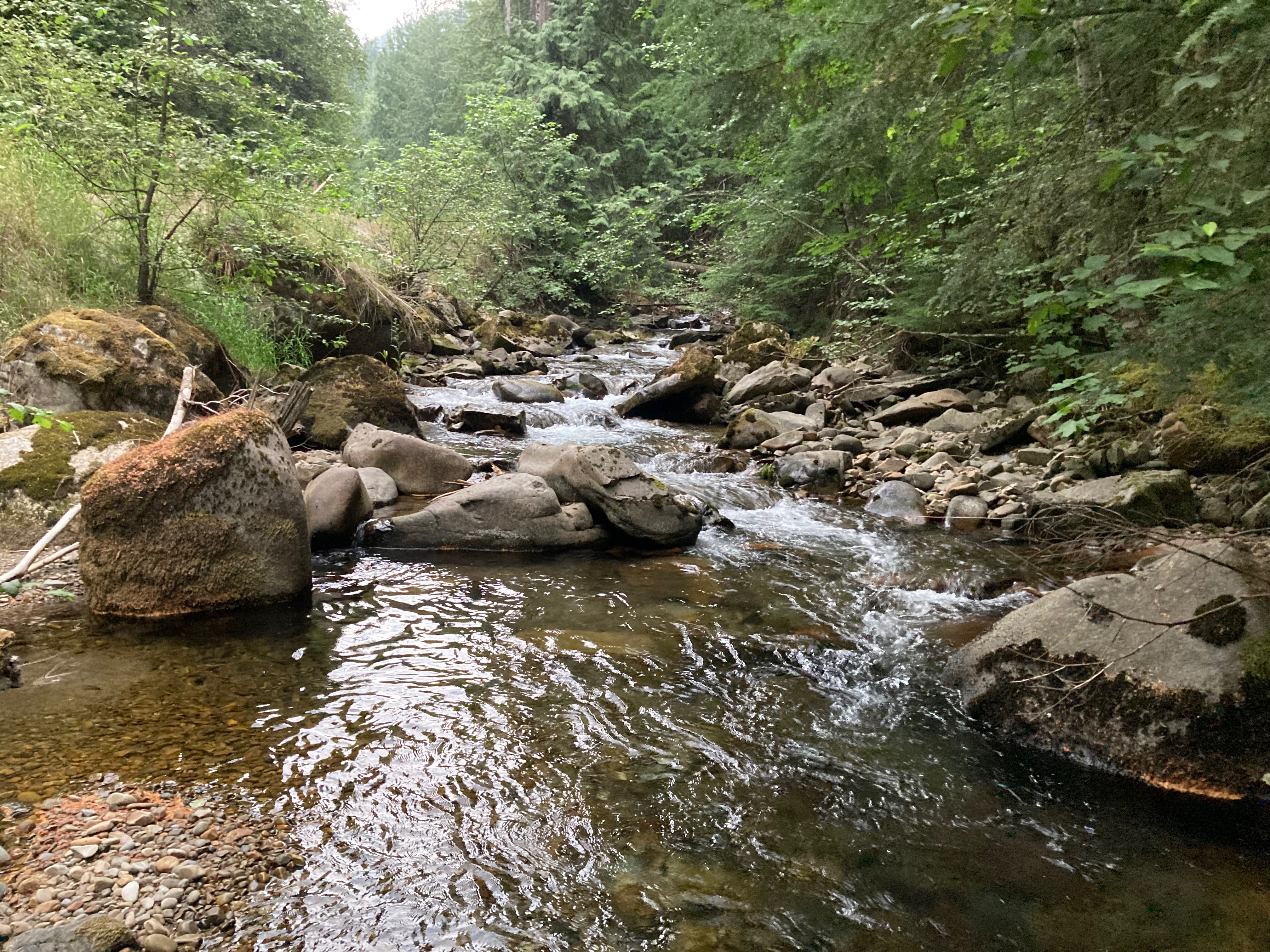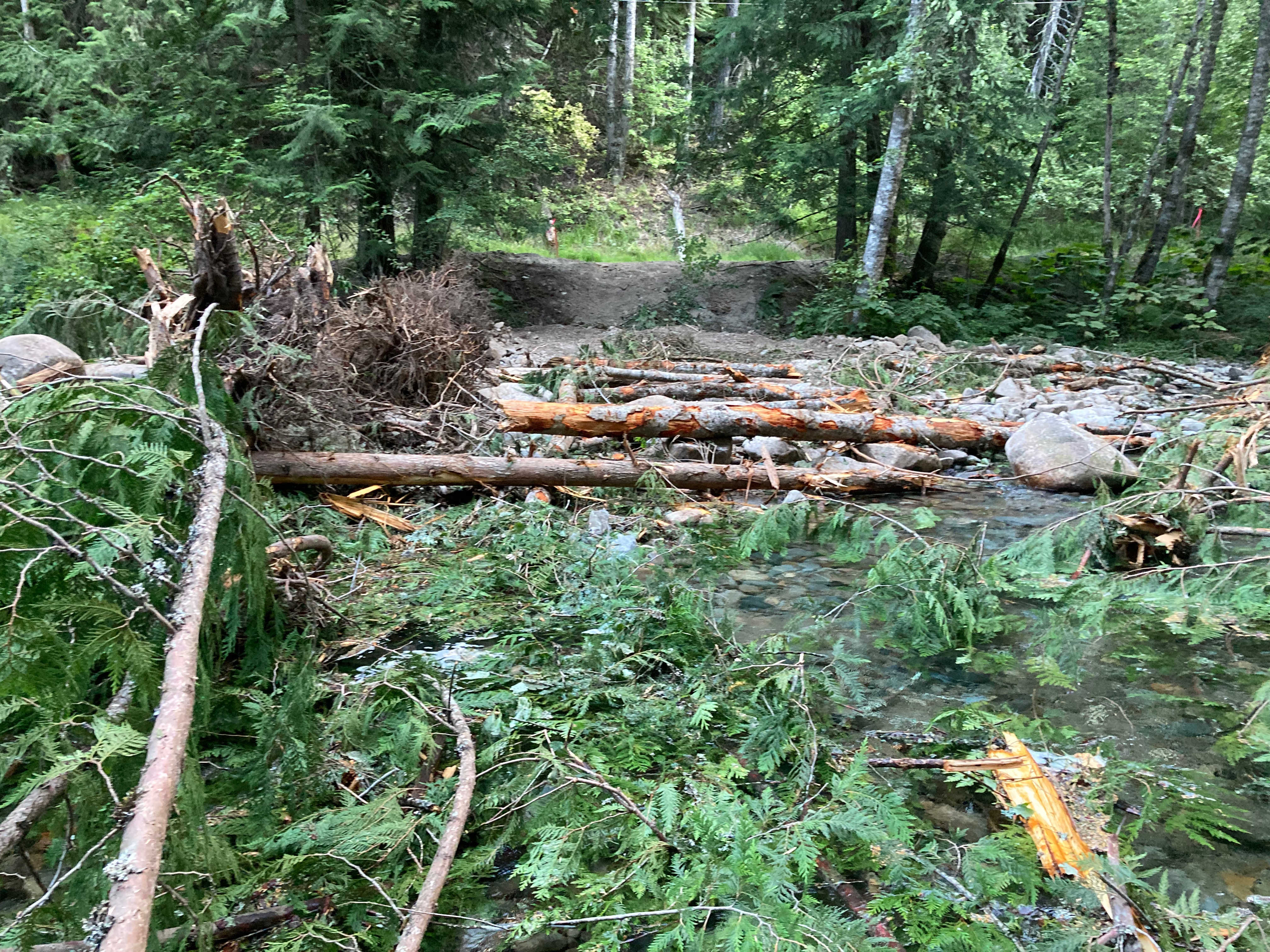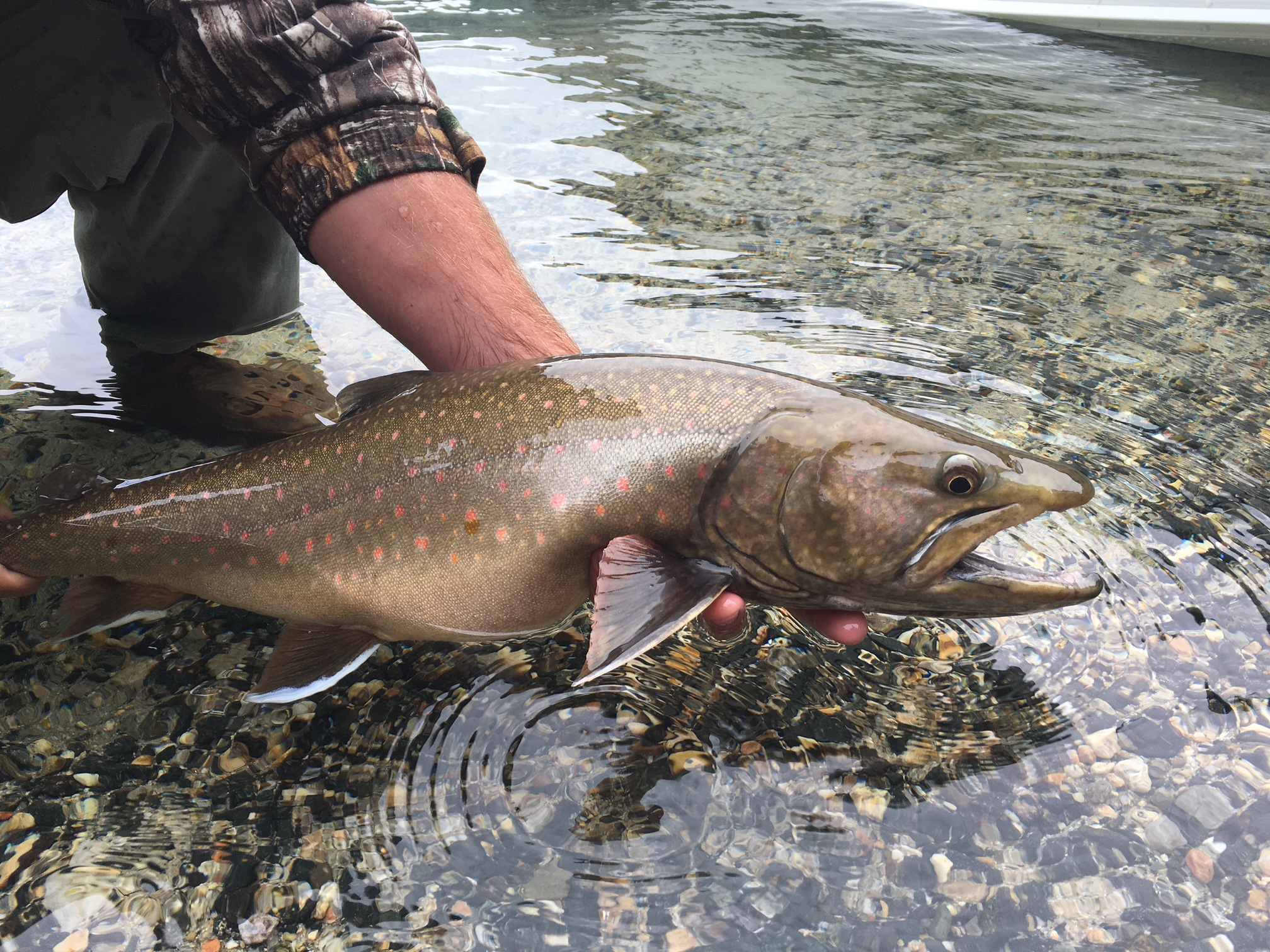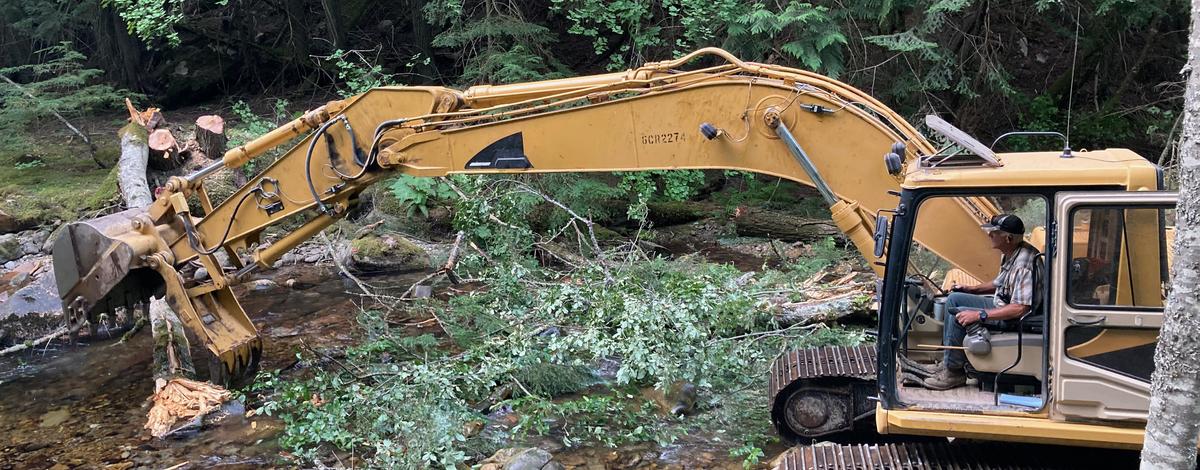Trestle Creek is one of the most important spawning tributaries for bull trout in Lake Pend Oreille, but the number of bull trout returning to spawn has declined in recent years. Fish and Game biologists took notice and developed plans to improve the creek’s habitat to increase native trout numbers while also meeting the needs of crews planning work on Trestle Creek Road.
Fish and Game Mitigation Staff Biologist Ken Bouwens and other project partners set out to complete a series of projects to build the habitat young bull trout needed.
Bouwens knew the importance of the creek for Lake Pend Oreille’s bull trout population. Bull trout are federally protected and listed as “threatened,” but there’s a healthy, sustainable population in the lake. Part of the reason for that is Trestle Creek.
“A short 10-15 years ago, Trestle Creek was responsible for nearly 50 percent of the bull trout production in Lake Pend Oreille,” Bouwens said.
Although not alarming, bull trout numbers have slowly trickled down in Trestle Creek. Bouwens also noted the creek is important for Westslope cutthroat trout in many of the same ways it is for bull trout. Both species use the lake and its tributaries for spawning and for growing young fish, so what is good for bull trout is also good for cutthroat.

Making a “mess”
Good fish habitat relies on things that often come across as messy to the casual observer, and while a uniform bank and shoreline may be scenic, young fish require places to hide from predators and feed, such as small side-channels.
“Unfortunately, Trestle Creek isn’t home to as many of those anymore,” said Bouwens.
Without a large, natural disruption, root systems of large trees solidified the creek bank, and as those roots firmed up the shoreline, the stream bed slowly became more and more locked into a main channel. That reduced the creek’s ability to form the side-channels young trout needed.
One day as he was driving up Trestle Creek to plan projects to fix that, Bouwens sensed an opportunity to expand the benefit of the projects to the general public.
“I noticed a group of people wearing bright-orange jackets talking by the edge of the creek. Never wanting to miss a good meeting, I pulled up and started chatting,” Bouwens said.
By the end of that chat, Bouwens had paved the way for a collaborative partnership among Fish and Game, U.S. Fish and Wildlife Service, Avista, Bonner County and Federal Highways Administration. Projects were developed to benefit young trout while also reducing risk of the creek damaging vulnerable parts of Trestle Creek Road. It was a win for trout and for road users.
Most of the stream habitat work took place during late-summer, and one week after the projects were completed, several bystanders described the projects with “What a mess!”

Taking the fish-eye view
The “messy” part lies in the eye of the beholder. For the average person, it may look more like havoc than order. After the projects were done, portions of Trestle Creek looked like a land slide had struck with trees, root wads, branches and boulders strewn all about.
But what may look to the human eye like a natural disaster, young trout see as a place to escape predators and grow large enough to later survive in the lake’s vast expanse of open water. And as all anglers know, there can be no big trout without little trout first.
As a biologist and an angler, Bouwens understands all sides of that equation.
“I know it looks like a mess, but it’s a strategic mess,” he said. “From a fish’s perspective, messy is good.”

Trout quickly find a new home
It didn’t take long for the fish to discover Trestle Creek’s new habitat. Within a week of project completion, Bouwens spotted half a dozen young fish darting about in a newly built trickle of a side-channel. They were about the size of a paper clip, and Bouwens also watched them devour small insects drifting by.
“Those fish weren’t there last week, so I think we have a good thing going here,” Bouwens said.

Only time will tell how much these projects will benefit native trout in Lake Pend Oreille, but the Trestle Creek projects are off to a promising start.
Bouwens is hopeful the efforts of Fish and Game and all project partners will result in more bull and cutthroat trout in the lake for the public to enjoy, and also envisions partnering with road crews on other projects in the future.
And the Trestle Creek projects could be very timely from another standpoint. Current fires in the Trestle Creek area could result in flooding when the rain and snow returns during fall and winter, and Bouwens is hopeful the projects will help the creek withstand the forces of flooding.
The get the full flavor of these projects from start to finish, check out the video below.
Video credit: Dustin Masin, Fish and Game Conservation Officer
Learn more about bull trout and other projects in Idaho.
There are not many places in the lower 48 where bull trout are abundant enough to offer decent fishing opportunity, but Lake Pend Oreille and many other bodies of water in Idaho are an exception. In fact, catch-and-release fishing for bull trout in Idaho has been steadily growing in popularity in recent years. The species is known to grow big and fight hard, making them a worthwhile quarry to pursue.
If you’re interested in learning more about fishing for bull trout, check out “Casting for the bulls: fishing for Idaho’s bull trout”.
To learn more about bull trout distribution, biology, and news in Idaho, click here.
If you’d like to learn more about Lake Pend Oreille, check out our “Lake Pend Oreille Fisheries” page.
Please remember that fishing for bull trout and Westslope cutthroat trout is catch-and-release only in the Lake Pend Oreille drainage. Trestle Creek is closed to fishing to provide undisturbed spawning habitat for many fish species. Make sure to check the 2019-2021 Idaho Fishing Seasons & Rules before heading out on your next fishing adventure.
If you’re looking for ideas for your next fishing trip, take a look at our Idaho Fishing Planner or contact your local Fish and Game office.

